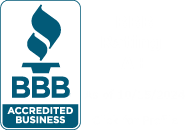Landing Page
We create custom landing pages that dramatically improve conversion rates by combining creative design & effective marketing strategy. Landing pages are gateways into your sales pipeline. Whether your visitor becomes a new lead or a missed opportunity depends on what they find there.
Landing pages fall in two major categories: reference and transactional.
Reference Landing Pages:
This category of landing pages display information that is both appealing and relevant to the visitor (text, multimedia).
Transactional Landing Pages:
Transactional Landing Pages aim at capturing strong sales leads and immediate sales.
calls-to-action (CTA)
All landing pages must meet both criteria: they inform the visitor upon the offer and incite actions. Before launching any landing pages, we need to be clear on the nature of the desired visitors’ action. Is increasing newsletter signups your goal? Then design a CTA with the message “Signup now to our newsletter”. Do you aim to have trial purchases from visitors? Say so. Generally speaking, the essential recipe is to make your landing page express this offer as clearly and as enticingly as possible.
The Process we follow to create our landing page design:
1. Use The AIDA Principle
- Awareness – attract attention from the visitor
- Interest – which can be aroused by highlighting the benefits to the customer
- Desire – induce in customers the idea that they want the product or service
- Action – customers performing the purchase process
2. Not Too Many Distractions; Leave A Way Out
If the landing page has virtually no navigation option except for the calls-to-action button, visitors will force their exit. Don’t think that if you don’t provide any navigation, they won’t find a way to leave.
3. Make It Pass The Blink Test
Typically, a landing page has to catch the visitor’s attention in the first 3 seconds of entry. If the guest blinks, and can’t see clearly what he should find on the page or isn’t interested with what he saw, he is most likely to bounce away empty-handed.
4. Don’t Create False Expectations
The landing page has to be consistent with the hints provided by the original ad, or vice versa. Visitors have to find on the landing page what they were first promised in the ad they clicked.
As we have promised, let’s tour some nicely designed and effective landing pages of B2B and B2C. We will explore their strengths and inevitable weaknesses. Watch out for the following in the gallery below: visual communication, branding and trust indicators, content effectiveness, calls-to-action.

